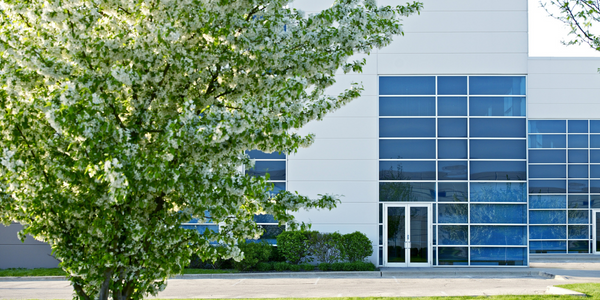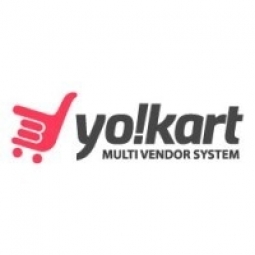技术
- 平台即服务 (PaaS) - 应用开发平台
适用行业
- 水泥
用例
- 时间敏感网络
关于客户
DueDash 主要为寻求资源、人脉和知识的初创公司提供服务,以帮助筹集资金。该平台为这些初创公司提供了接触经验丰富的专业人士的机会,他们可以向市场提供服务。它还将初创企业与投资者联系起来,指导他们完成尽职调查流程,以确保获得所需的资金。除了初创公司之外,DueDash 还为专家和投资者提供服务,为他们提供可见性并帮助他们接触需要他们的服务和投资的初创公司社区。该平台旨在成为初创公司创始人寻找筹款和初创服务相关来源的首选来源。
挑战
在线创业筹款社区 DueDash 的创始人在建立一个将初创企业与经验丰富的专业人士和投资者联系起来的平台的过程中面临着重大挑战。主要问题是缺乏团队和资源来构建可以测试市场的最小可行产品(MVP)。他们最初使用不同的积木构建系统,但这种方法既耗时又低效。另一个重大挑战是与在线市场相关的固有信任问题。创始人明白信任是其平台成功的关键因素,但与线下互动相比,在线环境中建立这种信任更具挑战性。
解决方案
这些挑战的解决方案是以 DueDash 的形式出现,该平台旨在通过将初创公司与经验丰富的专业人士和投资者联系起来,帮助初创公司扩大规模和发展。创始人使用“bricolage”的概念,结合不同的资源来创造更好的成果。他们还专注于在在线市场中建立信任,并认识到这是其成功的关键因素。为了克服与在线交易相关的信任限制,他们致力于创建一个透明且可靠的平台。 DueDash 市场是 DueDash 社区平台的延伸,为专家和投资者社区提供可见性和访问权限。该平台还利用数据来优化选择过程,确保初创企业与合适的专家和投资者相匹配。
运营影响

Case Study missing?
Start adding your own!
Register with your work email and create a new case study profile for your business.
相关案例.

Case Study
System 800xA at Indian Cement Plants
Chettinad Cement recognized that further efficiencies could be achieved in its cement manufacturing process. It looked to investing in comprehensive operational and control technologies to manage and derive productivity and energy efficiency gains from the assets on Line 2, their second plant in India.

Case Study
Digital Transformation of Atlanta Grout & Tile: An IoT Case Study
Atlanta Grout & Tile, a Tile, Stone & Grout restoration company based in Woodstock, Georgia, was facing challenges with its traditional business model. Despite steady growth over the years, the company was falling behind the web revolution and missing out on the opportunity to tap into a new consumer base. They were using independent software from different vendors for each of their department information and workforce management. This resulted in a lot of manual work on excel and the need to export/import data between different systems. This not only increased overhead costs but also slowed down their response to clients. The company also had to prepare numerous reports manually and lacked access to customer trends for effective business decision-making.

Case Study
Revolutionizing Construction Equipment Rental: A Case Study on ProsRent and ENO8
ProsRent, a startup that won the 'Best Financial Opportunity' and 'Best Pitch' at CodeLaunch 2016, aimed to revolutionize the way construction professionals source and rent heavy equipment. In the construction industry, project managers and contractors typically rent heavy equipment from supply companies. However, predicting inventory can be challenging, and finding the required equipment at the right time and place can be a hassle. If the preferred vendor doesn't have the required equipment, it results in wasted time and money in searching for it, often leading to higher costs due to non-preferred rates and increased delivery costs if the vendor is located far from the job site. Suppliers, on the other hand, desired access to a wider base of trusted renters that they didn't have to vet themselves and wanted to offer dynamic rental pricing based on demand and availability in their market. ProsRent's challenge was to produce a minimum viable product that was fast and first to market but also strong enough to engender loyalty and repeat business from the target market.

Case Study
AI-based Automation for Commercial Office HVAC: A Verdigris Case Study
Modern buildings are required to run longer hours, support a variety of end uses, and contribute to higher levels of economic productivity, leaving a thin margin for error. However, even the most advanced building and environmental control systems have failed to adequately support facilities and operations management. Buildings are often inefficient and the people using them are underserved. To meet occupant comfort and maintain cost and energy efficiency, a dynamic, AI-assisted approach is needed.

Case Study
Revamping EE's Legacy ERP: A Case Study on BT's Strategic Transformation
EE, even after its merger with BT, was operating its ERP estate on legacy infrastructure, hosted on the premises of a third-party supplier. This outdated system resulted in a volume-based operational model, higher time to market, longer delivery cycles, and unsatisfactory customer experience. BT recognized the need for a strategic transformation of these aging ERP systems and sought a partner who could proactively manage application services. The partner was also expected to handle development requirements associated with application management services, drive accountability, and ownership with a time and target-driven transformation of these services. BT's primary goals were to improve customer experience, reduce cycle time, and measure these improvements with precision.








